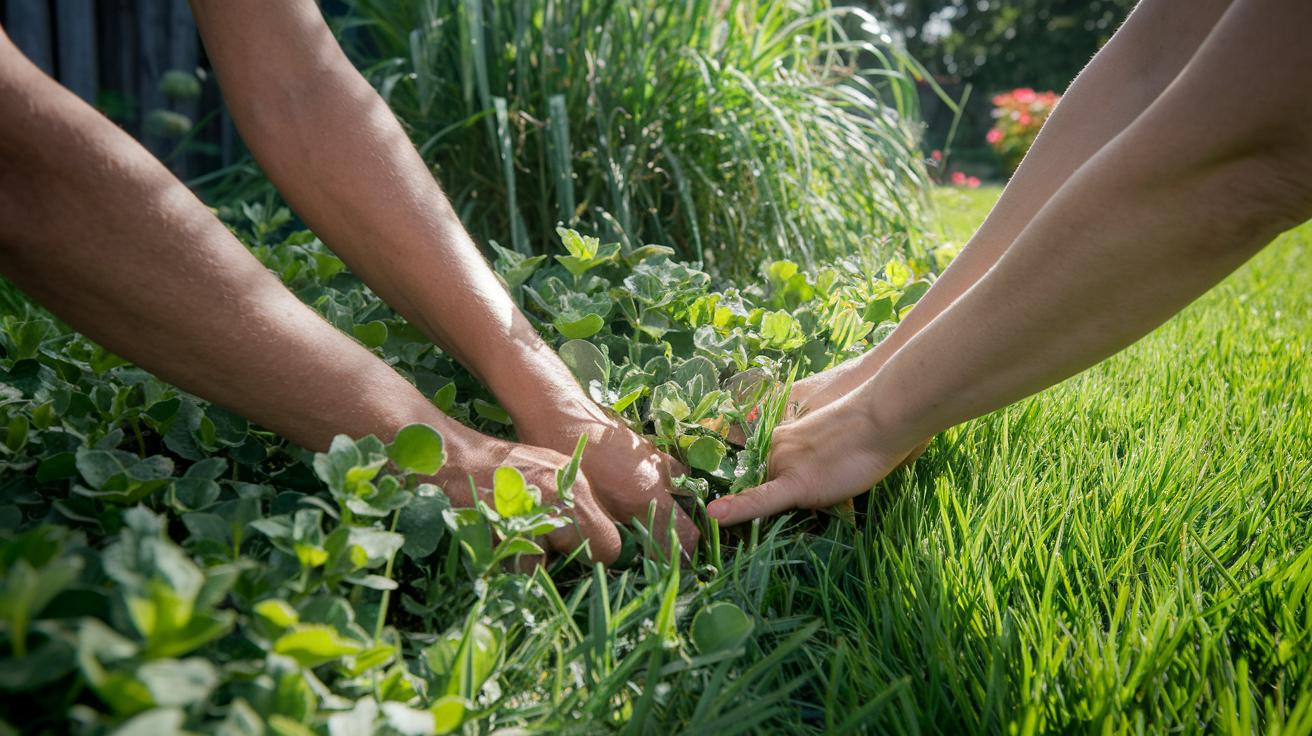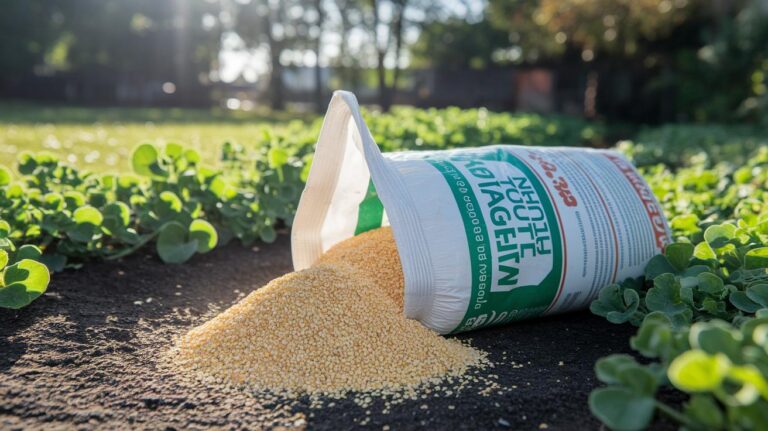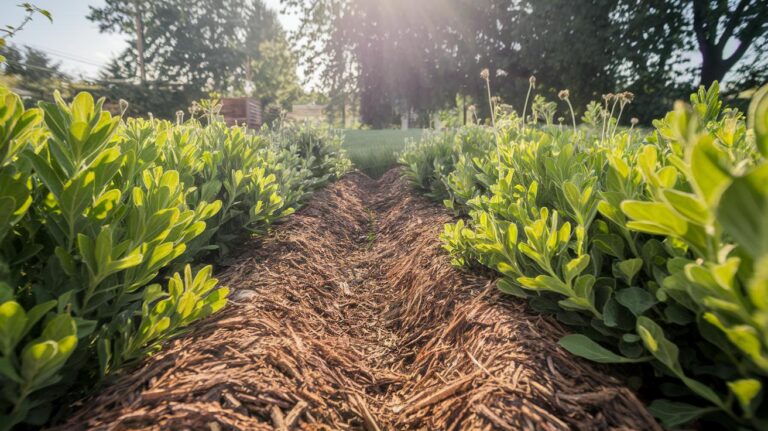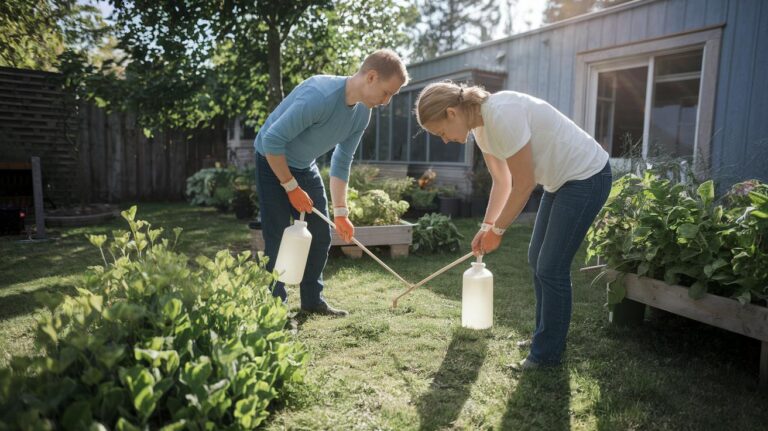How To Kill Weeds Naturally In Lawn Without Chemicals: Epic
Ever wondered if your pantry holds the key to a weed-free lawn? No chemicals, just three kitchen heroes ready to zap weeds at the roots. You’ll use vinegar (the sour stuff in your kitchen), boiling water, and good old hand-pulling (yanking weeds by hand). Together, they can turn stubborn patches into soft green turf that’s safe for pets and kids.
Grab a spray bottle and fill it with plain white vinegar. Pick a sunny day so the heat helps. Watch leaves wilt in a few hours. That tangy smell means those weeds are in trouble!
For tough patches, pour boiling water slowly at the base of each weed. Steam curls up around the stems as they shrivel. Wait for the soil to cool before letting pets or kids roam. Safety first, right?
Finally, get your hands dirty. Feel the earth crumble between your fingers and pull out every root. It’s like a mini workout after rain when the soil is soft. By the way, my cat loves sunning on my freshly cleared beds.
No fancy sprays needed. You only need three simple things from your kitchen. Vinegar spray. Boiling water. A little elbow grease.
Primary Natural Methods to Kill Weeds in Your Lawn Without Chemicals
Ready to clear your lawn of weeds without any chemicals? Let’s dive into three easy, all-natural tricks that hit weeds right at the roots or on their leaves. No fancy sprays needed – just things you can find in your kitchen or right at home. You can mix and match these methods based on how much time you have and where the weeds are popping up.
Vinegar spray is my go-to. Grab some white vinegar (the 5% stuff you keep by the fridge) or, if you want to crank it up, use horticultural vinegar (about 20% acetic acid). Just spray the young, soft weeds until their leaves start to dry out. In a few hours you’ll see them wilt like lettuce left in the sun. Neat, right?
Hot water does the trick too. Boil a pot of water on the stove and pour it carefully at the base of each weed. You’ll hear a little sizzle as the steam softens stems and cooks the roots. It’s perfect for cracks in your driveway or thin spots in the grass – no chemicals, just good old steam power.
When all else fails, roll up your sleeves and pull them by hand. After a rain or right after watering, the soil is soft. Grip each weed close to the ground and pull slowly but firmly. You want the whole root system, so the weed doesn’t pop back up. Then fill any gaps with fresh grass seed so new weeds don’t move in.
By the way, see Section 3 for a complete hand-pulling guide with tool tips, how to protect your back, and tricks for getting every last root.
Pre-Emergent Organic Alternatives for Lawn Weed Control
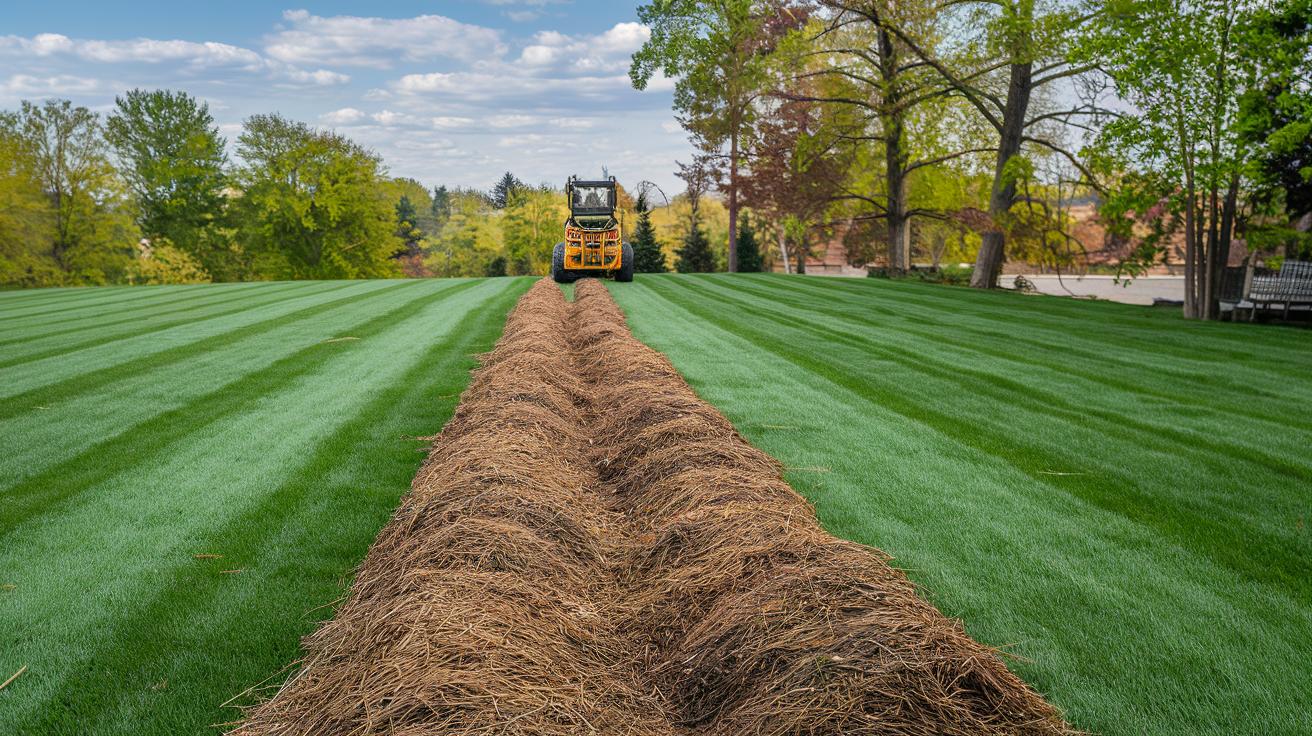
Stopping weed seeds before they sprout is like shutting the gate on uninvited grass guests. And you don’t need a single chemical to do it! Two simple, organic tricks can keep dandelions and crabgrass from ever popping up.
One is corn gluten meal (a powder left after making corn products that also stops seeds from growing). Spread 20–40 pounds per 1,000 square feet in early spring, just before the soil warms enough to wake tiny weed seeds. It acts like a thin blanket over the warm earth, blocking sprouting seeds and giving about 10 pounds of nitrogen (a plant nutrient) to your grass.
The other is a mulch barrier, 2–3 inches of straw or wood chips laid over bare spots. This stuff blocks sunlight, so seeds can’t wake up. It also holds in moisture and adds humus (decayed organic matter that enriches soil) as it breaks down. Ever smelled fresh mulch after rain? It’s like a cozy hug for your lawn.
Both methods wear out over time, so plan to reapply corn gluten next spring and top up your mulch when it thins. Low effort, big payoff. By the way, I once spilled a handful of straw in my kitchen, oops, but it reminded me how easy this stuff is to work with.
These steps sneak in a bonus: they let your soil breathe, ease compaction (hard soil that little roots can’t push through), and help grass roots spread out. That makes your turf thick enough to crowd out any stray weed seeds. Treat problem spots early, and you’ll keep your lawn one step ahead of unwanted visitors without harsh chemicals or pricey products.
| Method | Application Rate | Timing | Key Benefit |
|---|---|---|---|
| Corn gluten meal (prevents seeds from sprouting) | 20–40 lbs per 1,000 sq ft | Early spring, before germination | Blocks seed sprouting + adds ~10 lbs nitrogen |
| Mulch barrier (straw or wood chips) | 2–3 inches layer | After spot prep or seeding | Blocks sunlight, retains moisture, builds soil health |
Manual Weed Removal Tips and Tools for Eco-Friendly Weed Management
Pulling weeds can feel like a backbreaking job. But with the right tools and a little know-how, it’s almost effortless. Imagine the soft, warm earth crumbling under your fingers as you ease each weed out by the root. Have you ever laughed at how satisfying that feels?
Here’s what you’ll want nearby:
- Hand weeder (a small metal fork you slip under roots to lift them)
- Dandelion digger (thin blade that digs out taproots, the main root that grows straight down)
- Hori-hori knife (garden knife with a curved, sharp edge for cutting through soil)
- Thick gloves (padded protection for your hands)
- Knee pads (soft cushions so your knees aren’t yelling at you)
And here’s how to make it easy:
Alternate between kneeling and standing. It gives your back a break. Use a long-handled tool if you need more reach. Press the weeder’s fulcrum edge into the soil. Then rock it back to lift the root. Twist gently to snap taproots free. For fibrous roots, try a root-hook attachment, it rocks them right out.
Pull weeds after a light rain or watering. Soft soil lets you grab the whole root in one go. A little practice and you’ll feel like a weeding pro. No more survivors popping back up. Just clean beds and happy plants.
Preventive Mowing, Watering, and Aeration for Non-Toxic Turf Maintenance

Mowing is like giving your lawn a neat haircut. When grass blades stay tall enough, they cast shade and keep weed seeds from sprouting. For fescue or rye (cool-season grass that does best in cooler months), set your mower to 2.5 to 3.5 inches. Those taller blades hide the soil so crabgrass and dandelion seeds can’t catch the light.
Warm-season grass, like Bermudagrass or zoysia (grass that loves hot weather), prefers a shorter cut, about 1 to 2 inches. Try bumping the mower deck up one notch every few cuts. You’ll soon notice clover and chickweed having a harder time poking through.
Water deeply once a week to push roots down into the cooler earth. If you sprinkle a little every day, roots stay near the surface and invite weeds in. Aim for about one inch of water weekly, grab a rain gauge (tool that measures rainfall) to check. Water in the early morning so blades dry fast, keeping soggy spots, and unwanted sprouts, at bay.
Soil that’s tight as a drum makes it hard for grass roots to breathe and drink. Pulling 2 to 3-inch cores every 1,000 square feet with a plug aerator (tool that removes small soil plugs) adds extra air and water below. Leave those soil plugs on the surface and let them crumble back in, like natural compost (decayed organic matter that enriches soil). Your lawn will grow tougher roots and crowd out weeds.
Want to do it by hand or rent a machine? Check manual lawn aeration (https://www.backyardsuperstar.com/?p=829) for a quick walkthrough.
Enhancing Soil Health to Outcompete Weeds Naturally in Your Lawn
First, test your soil pH (measure of how acidic or alkaline your soil is) each year so you’ll know where you stand. Aim for 6.0 to 7.0, the sweet spot. Too low? Sprinkle lime (crushed rock that raises pH). Too high? Mix in sulfur (mineral that lowers pH). This balance keeps grass strong and makes it harder for weeds to take root.
Next, spread a thin 1/4-inch layer of compost (decayed organic matter that enriches soil) or worm castings (worm poop full of nutrients) across your lawn. These helpers boost microbial activity (tiny living things that break down nutrients) so roots can dig deeper. I love feeling the warm earth crumble between my fingers. Strong roots mean a thicker lawn and fewer spots for weeds to sneak in.
Then feed your lawn with a slow-release fertilizer (nutrients that release over weeks) and compost tea (liquid made by steeping compost in water). These organic snacks give grass a steady meal instead of one big dump. Check out this natural lawn fertilizer for product picks. Spray compost tea over thin or bare spots, and you’ll watch new green pop up.
Thick grass shades the soil so weed seeds never see the light. Planting these habits now sets you up for a lush summer yard.
Seasonal Maintenance Calendar for Natural Weed Control in Lawns
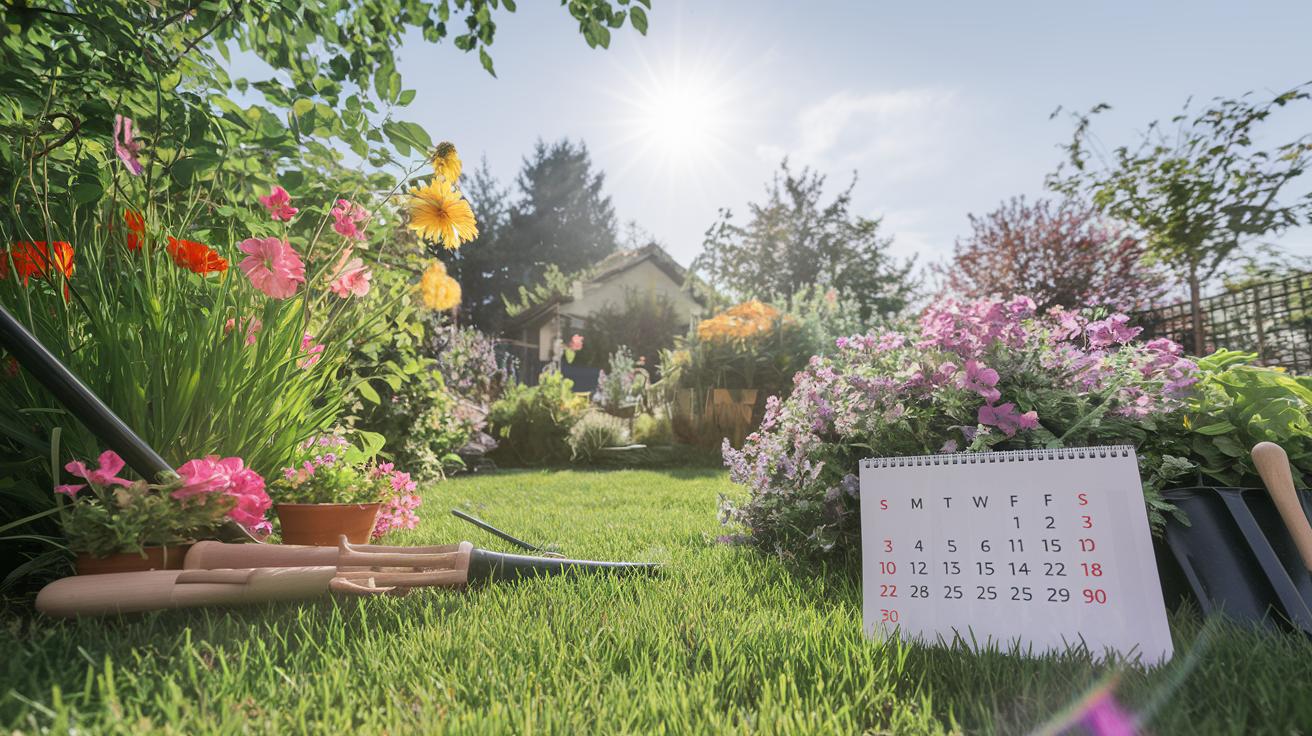
| Season | Tasks & Tips |
|---|---|
| Spring | Lay down a pre-emergent (prevents weed seeds from sprouting) like corn gluten meal (a corn byproduct that feeds grass nitrogen). Mow at about 3 inches so new sprouts stay small and your lawn looks neat. |
| Summer | Pull weeds by hand or try the spot-hot-water trick (pour boiling water right on sprouts) to zap them without chemicals. Water deeply in the morning so grass roots stay moist and strong all day. |
| Fall | Core aerate (punch small holes in soil so air, water, and nutrients get in) then scatter ryegrass seed for a dense, spring-ready lawn. Top-dress with compost (decayed organic matter that enriches soil) for an extra growth boost. |
| Winter | Rake off fallen leaves and sticks, then do a simple soil test to check pH. And try to keep off the grass, you’ll bruise those blades if you walk on dormant turf. |
Safety, Pros, and Cons of Natural Weed Killing in Lawn Care
Natural ways to kill weeds have a sweet side. You end up with no chemicals settling into your soil or on grass blades. It’s gentle on busy bees buzzing over clover and on helpful worms tunneling through the earth. I love that a jug of vinegar or a simple hand weeder (a tool for pulling weeds) costs just a few bucks. Best part? Kids and pups can play on the grass as soon as it dries – no weird smells or hidden toxins.
But they do ask for a little sweat equity. You might spend hours spraying, pouring boiling water, or bending low to tug out tough taproots (the weed’s main root). Young weeds shrivel fast.
Older ones can laugh and bounce back if you leave a sliver of root behind. It can feel like a slow game – no instant green like store sprays give. And you might find yourself out in the sun again and again until that crabgrass (a common lawn weed) finally quits.
Safety is easy if you follow a few simple steps. Slip on thick gloves and wear safety glasses before using hot vinegar (with acetic acid, the acid in vinegar) or steam. When you pour boiling water, lean back so you don’t get splashed, and keep your feet on solid ground. Oops, I once spilled a little and got a hot drop on my boot, trust me, you don’t want that. Cover nearby flowers or move your potted herbs to keep them safe. Keep kids and pets away until the drips dry and the edges turn brown. Then you’re good to go – enjoy your tidy, weed-free lawn!
Final Words
In the action, you discovered three fast, chemical-free ways to zap unwanted greens: vinegar sprays, scalding water, and good old hand-pulling.
Then we covered preventive steps: corn gluten meal and mulch, and dug into mowing, watering, aeration, and soil boosting with compost tea. Seasonal checklists help you stay ahead.
Now you’ve got simple steps on how to kill weeds naturally in lawn without chemicals and build a lush, healthy turf. Happy gardening!
FAQ
How can I kill weeds naturally in my lawn without chemicals?
Killing weeds naturally in your lawn without chemicals means spraying 5% white vinegar on leaves, pouring boiling water at the plant base, or pulling weeds by hand to remove roots.
What is the vinegar solution recipe for killing lawn weeds?
The vinegar solution recipe for killing lawn weeds uses household white vinegar (5% acetic acid); spray on sunny, dry days to dry leaf tissue. Horticultural vinegar (20% acetic acid) works faster but needs careful handling.
How does the boiling water technique kill weeds?
The boiling water technique kills weeds by pouring hot water onto the plant base, which breaks plant cell walls and kills roots and leaves on contact.
What tools and gear are needed for hand-pulling weeds?
Effective hand-pulling weeds gear includes a sturdy hand weeder, dandelion digger or hori-hori knife with ergonomic handle, plus gloves, knee pads, supportive shoes and sun protection.
How do I prevent weeds before they appear?
Preventing weeds before they appear involves applying corn gluten meal at 20–40 pounds per 1,000 square feet in early spring and mulching bare spots with straw or wood chips.
How do mowing, watering, and aeration help reduce weeds?
Mowing at proper heights shades soil, watering deeply once a week builds strong grass roots, and core aeration removes soil plugs to boost air and water flow, making weeds less likely.
How can I improve soil health to outcompete weeds?
Improving soil health to outcompete weeds starts with testing pH and keeping it between 6.0 and 7.0, then top-dressing with compost or worm castings and using slow-release organic fertilizer or compost tea.
What seasonal tasks keep my lawn weed-free all year?
Seasonal tasks keep a lawn weed-free all year by dethatching and applying corn gluten meal in spring, spot treating and deep watering in summer, aerating and overseeding in fall, and clearing debris in winter.
What are the pros and cons of natural weed control methods?
Natural weed control pros include no chemical residue, low cost, and safety for pollinators; cons cover more time, slower results, and the need for repeat spot treatments.
Are natural weed control methods safe for children and pets?
Natural weed control methods are safe for children and pets when you wear gloves and eye protection for vinegar, pour boiling water carefully, and shield plants and play areas from runoff.

